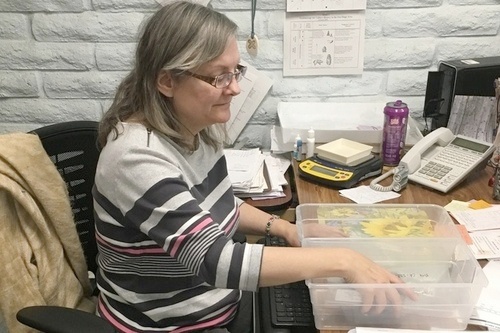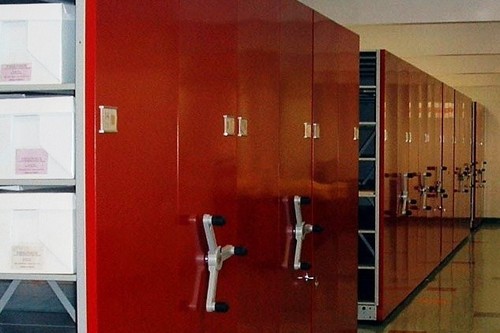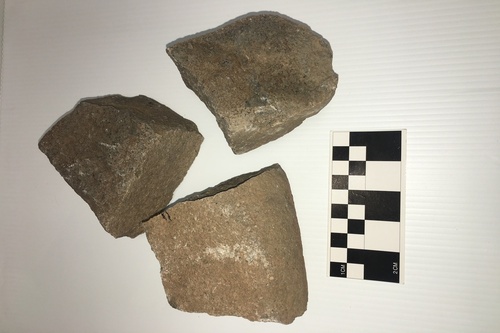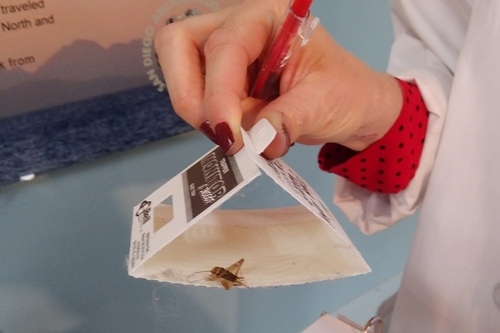
From Inside the Vaults: Acquisitions and Cataloging
From Inside the Vaults is a monthly blog that gives insight into best practices for collections stewardship, curation, and archaeological collecting institutions.
What is Collections Cataloging?
Have you ever wondered what happens when new collections come into the Center? How do institutions know which artifacts to collect? The acquisition process is a largely important part of a Collections Manager’s job. Strict guidelines are in place to make sure that the collecting institution only collects artifacts that strengthen their mission and purpose.
How Do Museums Acquire Artifacts?
There are many different ways in which museums acquire artifacts. The most common ones are when artifacts come in as gifts/donations and when artifacts are purchased. Different museums collect different types of artifacts and this directly affects the way their collections are acquired. In past experiences when working for historical museums, most donations were gifted by local community members or purchased by a Curator or Collections Manager to make the existing permanent collections or an upcoming exhibition stronger.
At the San Diego Archaeological Center, artifacts are mainly acquired by donation but because the Center is a repository of archaeological artifacts and not just a museum; donations are typically legal transfers of title from county developments via Cultural Resource Management (CRM) firms (rather than gifts). CRM firms deal directly with developers from around the county whom by state law are required to have archaeologists and monitors on site when a new development is underway.
The Center may accept private donations, but this is not typical because of the loss of context (or provenience) that occurs when artifacts are taken from the ground in a non-methodical way.
Criteria for Acquisition
The guidelines for what the SDAC will acquire as collections are detailed in the Center’s Collections Management Policy (CMP). A CMP defines the types of collections the institution may collect, the decision process for accepting these collections, and how and where they should be cataloged within the museum’s collections. The Center was established to acquire and curate archaeological collections representative of the region’s history, and therefore mainly focuses on San Diego County artifacts. As stated in the SDAC’s CMP, criteria for accepting collections for permanent curation include
- The collection is accompanied by required documentation
- The collection is accompanied by full payment for accession fees, revitalization and/or other services as specified in the Accession Agreement and the donor is the lawful owner of the collection, has the authority to make the gift and is willing to transfer all associated rights of the donor
- The donor is willing to certify that the collection has not been obtained in violation of any local, state, national or international laws pertaining to natural or cultural material
- There are no encumbrances upon the collection
- The donor acknowledges that the collection becomes irrevocably the property of the Center and may be displayed, stored, maintained and disposed of as the Center deems appropriate
- The donor acknowledges that the collection may be reproduced in any media including but not limited to photographs, video, note cards, posters, publications, clothing, electronic media, etc., including but not limited to digital and computer images
- The donor is willing to sign an Accession Agreement
Additional considerations may include:
- Does the collection complement the existing collections?
- Is the collection in reasonably good physical condition?
- Is the collection hazardous to other collections or personnel?
- Is the collection exorbitantly expensive to conserve or maintain?
- Does the collection possess future research and/or educational potential?
- Is the size of the collection manageable?
- Is the collection from a time period or geographical area under-represented in the collection?
- Does the collection have exhibit or educational value?
- Was the research methodology used to obtain the collection unique?
- Is the collection unique in any way?
Teaching Collections
When artifacts are accepted as donations because they meet an above criteria, yet have lost their context or provenience; they may still be collected (based on their relevance, research value, and importance) but are not accessioned into the permanent collections. Many institutions have research and teaching collections for these purposes and since these artifacts are not permanently accessioned, they may be used for educational purposes and therefore, are treated differently than permanent collections. The SDAC has many teaching collections that are used to strengthen students, researchers, or volunteers/interns knowledge of archaeology in San Diego.
How Acquired Collections Are Processed
In any case, at the SDAC when collections are acquired (either by private or CRM firm donation) the documentation that goes along with them is the same. As collections are brought in they are accompanied by a transfer of title, a receipt of collections, and a copy of the payment for curation. These documents are kept digitally and the hard copies are kept in acid-free file folders that are specific to each collection. The Collections Manager will inspect the collection and make notes of condition, clean incoming boxes, do an artifact count, and look for pests before the collection is given an SDAC collection number and then put away for temporary holding in the intake vault until curation. The information collected during this process is recorded digitally and a catalog record is created in the Center’s artifact database. The location of the collection is recorded and the Collections Manager puts the new collection on her list of collections to be curated.
At the Center, volunteers and interns work on projects in which they catalog and curate collections. This process includes reading the project report, doing an inventory of the complete collection, making sure that each artifact has its own unique catalog number, weighing and counting the quantity of artifacts present, reconciling any discrepancies that may be found throughout curation and finally labeling, bagging, and completing the collection documentation.
Why Having Acquisition Criteria Is Important
A main reason that following the guidelines put forth in the CMP is important has to do with space in museum collections rooms. It is not infinite and will fill up; therefore it is pertinent to only collect artifacts that will strengthen a museum’s mission. Additionally, by collecting artifacts that are not mission related, an institution may be taking the value of artifacts away from museums and their communities that would benefit by having them in their collections. By following these guidelines, Collections Managers can ensure proper collecting and cataloging procedures that will strengthen collections for current and future generations.
To read the SDAC Collections Management Policy, search permanent collections, or to learn more about state and local laws regarding archaeological collections in San Diego, visit our Curation page on the SDAC website.
By Jessica McPheters, Collections Manager




